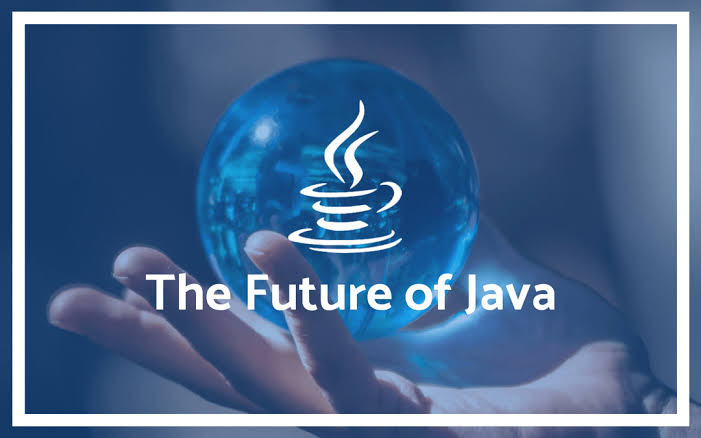Over the years, Java has earned its status together of the leading programming languages for enterprise applications. Today, Java powers much of the software utilized in the important world to facilitate business and attain tasks. Its stability, predictability, depth of features, and powerful community have made it an excellent choice for developers to use it.
Oracle has released consistent updates to Java every few years within the past. These updates were functional, complete, backwards compatible, and played well with existing enterprise applications in most cases.
Oracle realized that slow release cycle meant Java was falling behind other languages for brand spanking new applications and features.
Faster Release Cycle
A recent trend for Oracle, Java, and development generally has been moving faster. More frequent releases ensure users get new features more frequently. It also reduces risk if something goes wrong. Oracle recently announced it might be moving Java to a faster release cycle. The (JDKs)Java Development Kits release every six months. Java 9 and now Java 10 are released under this new schedule, with the 2 updates coming in quick succession.
In theory, this suggests that companies that value stability and predictability can upgrade whenever a LTS release comes out. Companies that want to remain on the leading edge or access new features are going to be ready to get more frequent releases in between. For previous Java releases, Oracle has made use of auto-updating on desktop to bring users up to hurry with the newest version of Java. Anyhow, on the new release schedule, Oracle will not enforce auto-updates on Java 8 desktops.
Java 9
Java 9, Released in September 2017, made significant updates and Changes to its three-year-old brother, Java 8. Chief among those updates is a completely new architecture and structure to Java. JDK 9 uses a modular structure rather than the old monolithic model we’re familiar with with Java. For devs, this suggests modulepath replaces classpath and every module runs independent of 1 another.
The advantage of modularity is that the ability to line up custom configurations of modules and take away any unnecessary modules. Such configurations can significantly increase efficiency and scalability in Java apps. The main goal of this modularity push is for making Java more convenient to smaller-scale machines, especially smartphones.
In Java 9 Another major update was the JShell Read-Eval-Print-Loop functionality. Developers can now get instant feedback on how their code is functioning , rather than taking the seconds to run the program, feedback comes in real time.
Java 10
Java 10 released in March 2018. Right on schedule, six months after Java 9. Being an incremental release, Java 10 didn’t include any monumental changes, but it did break ground during a few key areas. Most importantly, Java 10 includes a replacement garbage man interface that organizes and concentrates the ASCII text file for garbage pickup into one place rather than distributing files and pathing throughout the environment.
The remake of Java also can make inferences about variable type once you use the “var” keyword. Java remains strongly typed, but this makes it easier to define and set a replacement variable. In addition, Java 10 makes it easier to use Docker containers within the JVM, further improving on the scalability and modularity of Java 9.
Java 11
Java 11 remains several months away, but we already know a couple of things about what to expect from the upcoming reference version, long-term support release within the fall of 2018 (scheduled for September). These scheduled updates include standard upgrading Java to Unicode 10 (previous versions used Unicode 8) and browser updates. Other updates are going to be more substantial, like new syntax for a few Lambda parameters, a garbage man with lower overhead, and new class-file constants. Java 11 also will get obviate support for Java EE and COBRA modules. COBRA is retired now and Java EE is now changed to Jakarta EE, maintained by the Eclipse Foundation.
Since it’s the new long-term support release, Java 11 also will standardize and codify the improvements from Java 9 and 10. This long-term support applies to customers with a billboard support contract from Oracle. Public updates to Java 11 is as Java 12 releases is already in the market.
The Future of Java
So, that covers the recent changes and what’s coming within the near future for Java. What about the long-term investments in the Java ecosystem?
The ongoing trend is embracing interoperability. Java has opened its doors to partnerships with other organizations to increase the Java community. OpenJDK and Jakarta EE are two samples of this interoperability in action. Moreover, The future versions of Java will concentrate more on API integration and support, modular open source libraries and frameworks, and greater attention to microservices, containers, and mobile devices. Spring, Kotlin, and other frameworks/stacks also will become increasingly popular for developing new applications.
Conclusion
With Java’s new quick release cycle, expect tons of changes within the coming years. Java will become more aware of emerging trends in development and therefore the needs of its users. This strain of a quick release cycle in combination with extended support for reference builds means Oracle has implemented a hybrid approach that gets the only of both worlds in terms of stability and flexibility.


